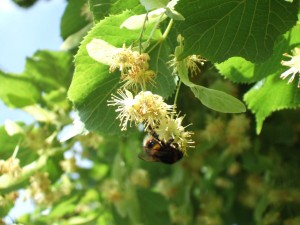Look after wildlife
If you’re visiting this website, you’re probably already doing your bit as a wildlife-friendly gardener. You’ll already get it that climate change threatens wildlife, and want to do what you can to prevent climate change so that you can help wildlife. But perhaps you’re wondering whether it works the other way round. So how might looking after wildlife also help to keep the climate equable?
We need other living beings of course to absorb carbon dioxide and to store that carbon. Some of those living beings are our cultivated plants. But some wild organisms also help – indeed many of them are essential. Wild plants help to absorb carbon dioxide. The bacteria which live in symbiosis with nitrogen-fixing plants convert the unobtainable atmospheric nitrogen into available nitrates, which allow plants to build more tissues and absorb more carbon dioxide, but without the risks associated with synthetic nitrogen fertilizers. Invertebrates such as woodlice, fungi, protozoa and bacteria help to break down dead plant matter and convert it into inorganic long-term soil carbon or humus. Earthworms also help not only to break down dead plant matter but to keep soil aerated – and although moles eat earthworms, they too help to keep soil aerated. Earthworms, soil micro-organisms and mycorrhizal fungi excrete various chemicals which help soil particles to stick together and to aggregate into crumbs, and this helps soil aeration and soil structure. Mycorrhizal fungi help plants to absorb minerals and water, and so help them to stay healthy, to grow well, and to absorb and store more carbon. Other animals, such as many beetles, birds, bats, frogs, toads, and slow-worms, act as biological controls, eating garden pests and so increasing plant growth and therefore carbon dioxide absorption (and reducing the temptation to use persistent pesticides). Others act as pollinators, making sure we have food crops, and making sure that plants can reproduce and spread.
So if we can help to keep a balanced diverse mixture of many wild species of plants, animals, fungi, and soil organisms then we’ll also be helping to reduce climate change. The key things to achieve this are not to kill wildlife, but instead to create a mixture of habitats and food sources:
- have a garden of plants and soil rather than a garden that’s full of buildings and paving;
- avoid pesticides;
- don’t kill animals such as moles;
- create an orchard garden with many layers to provide a wide diversity of habitats;
- if we have a lawn, allow some grass to grow longer to provide another habitat;
- create a wildlife pond or two to create another habitat (and frogs and toads make great biological controls, for example by eating slugs and snails);
- keep the soil covered with ground-cover plants, and allow fallen leaves and twigs to stay on the ground and feed soil organisms such as earthworms and fungi;
- grow perennial plants rather than annuals as much as possible, so that the soil is cultivated as little as possible;
- use nitrogen-fixing plants (such as wisteria, lupins, and other legumes, Elaeagnus, and Ceanothus, and native nitrogen-fixing plants such as alder, red clover, white clover and bird’s-foot trefoil) not only because synthetic fertilizers are more likely to be used in excess and to break down to nitrous oxide, but also because excess nitrogen from synthetic nitrogen fertilizers may cause the associations between plants and mycorrhizal fungi to break down;
- choose plants with flowers, fruits and seeds which can feed animals such as birds, bees, butterflies and moths, and (if we’re lucky enough to live somewhere that still has them) red squirrels, dormice, and other rare mammals.
And good gardens don’t just help to reduce climate change: networks of green spaces can reduce the impacts of climate change as well.
There’s plenty of good advice out there. Here are two good places to look:
Wildlife Trusts
Royal Horticultural Society
And check out the Find out more pages.



